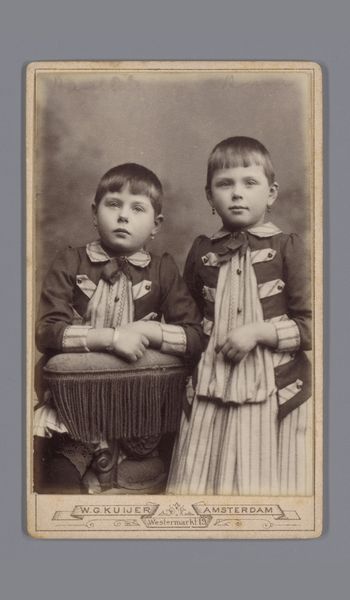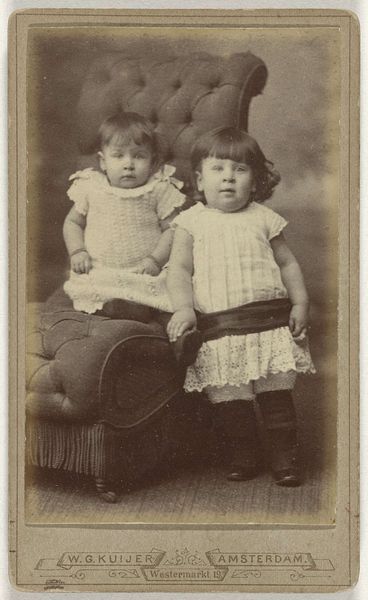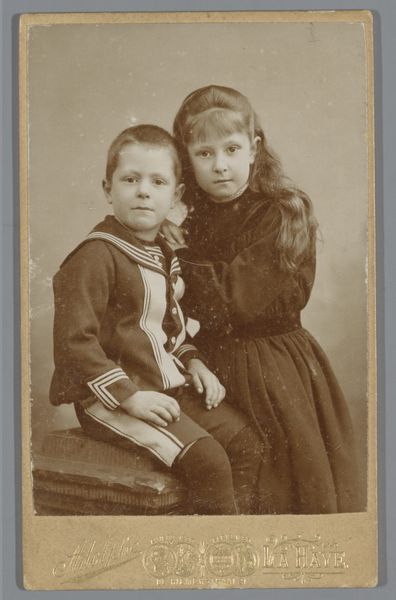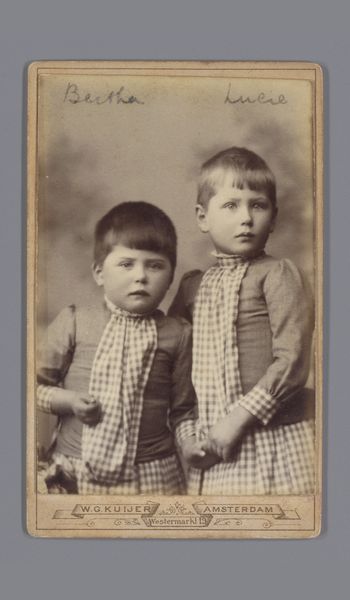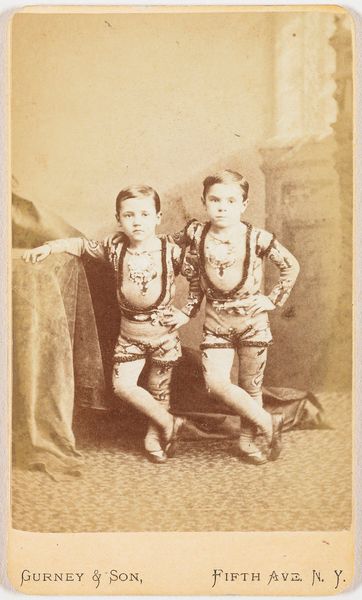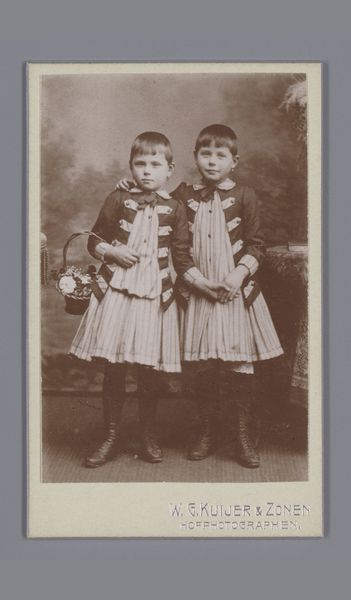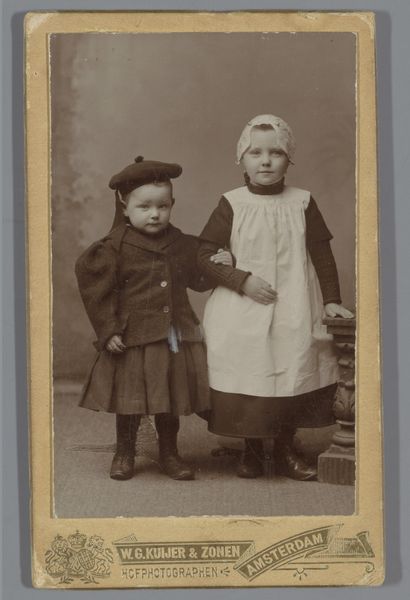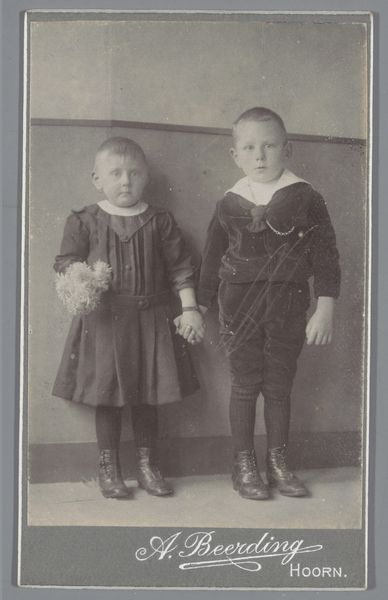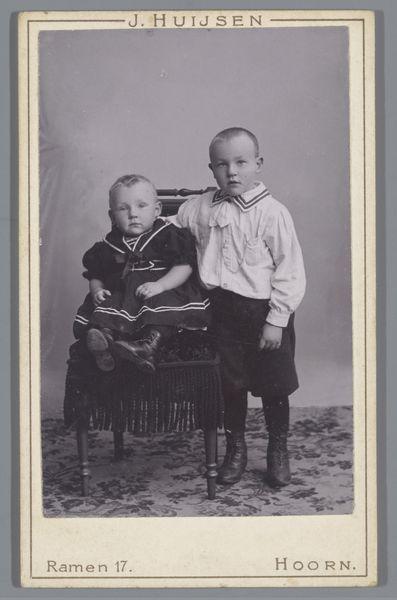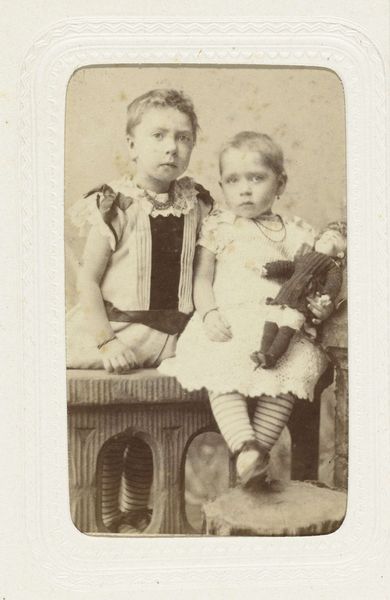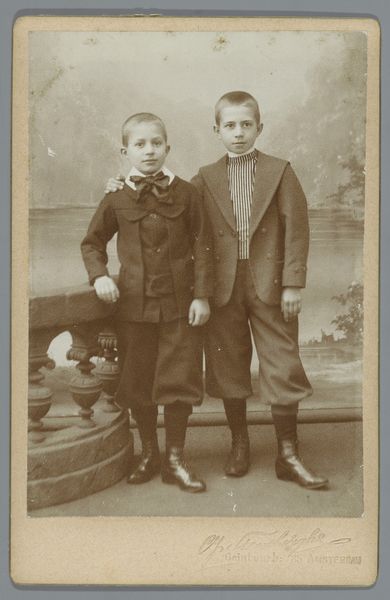
photography, gelatin-silver-print
#
portrait
#
archive photography
#
photography
#
historical photography
#
group-portraits
#
gelatin-silver-print
Dimensions: height 88 mm, width 57 mm, height 104 mm, width 61 mm
Copyright: Rijks Museum: Open Domain
Curator: Here we have a gelatin-silver print titled "Portret van Guurtje en Neeltje Bark" created around 1895-1900 by J. Siewers & Zoon. Editor: What strikes me immediately is the weight of the sepia tone, lending a sort of grave, solemn mood to what should be an image of youthful innocence. It really shapes my first impression of the two children pictured here. Curator: Indeed. The image acts as a window into a world governed by rigid social mores and expectations, especially in relation to the family structure. Children represented familial honor and legacy. Consider, for example, the ornate detailing of their garments: the lace collars, neatly cinched waists, even the matching bracelets suggest a certain aspirational symbolism tied to societal rank and family representation. Editor: Formally speaking, note how the light articulates form; see how the light evenly grazes their faces and frocks to provide subtle textural information, especially around the lace. But the composition seems consciously flattened by the backdrop and limited tonal range; that painted backdrop appears as substantial as a brick wall! Curator: Perhaps, but it’s interesting that you should focus on the backdrop since these painted elements represent something quite essential. Such studio props were ubiquitous across the history of photography and signaled a clear departure from reality and towards staged idealism. The painting might then refer to both a longing for a better present as well as a better future. Editor: Hmm, I suppose the photographic emulsion does collapse pictorial space, in a way denying depth which affects meaning. Do you believe then that our psychological reading of this type of photograph changes significantly with time? Curator: Certainly. Our perspectives on youth and beauty change. What was considered pleasing in those times—modesty, restraint—can be perceived differently through today’s cultural lenses, influencing the picture's symbolic function within contemporary discussions around memory and representation. Editor: Well, on that note, I’ll need to rethink what’s at stake in reading visual cues from the late 19th century! Curator: Absolutely. And consider how those formal choices reveal a deeper intention to convey the family's position in society.
Comments
No comments
Be the first to comment and join the conversation on the ultimate creative platform.
